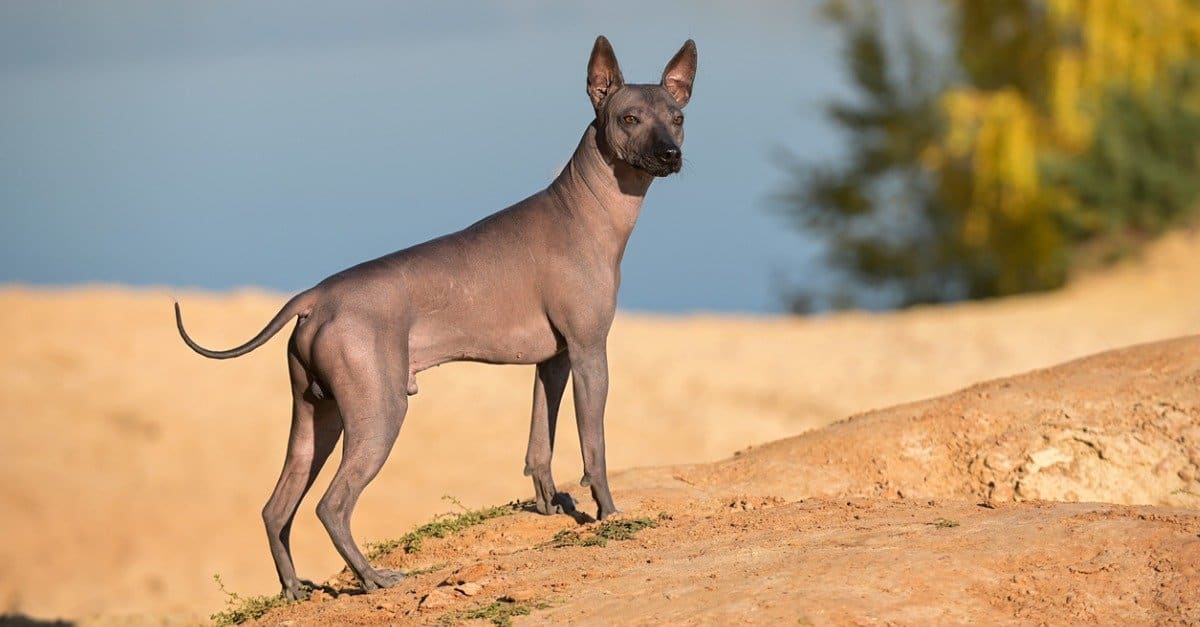
The Mexican Hairless Dog, also known as the Xoloitzcuintli or Xolo, is a remarkable and ancient breed that has a rich history dating back thousands of years. This unique breed is characterized by its hairless appearance and has been a symbol of Mexican culture and heritage. In this article, we will explore the origins, characteristics, and cultural significance of the Mexican Hairless Dog.
Ancient Roots
The Mexican Hairless Dog is one of the oldest dog breeds in the world, with a history that can be traced back over 3,000 years. Its name, Xoloitzcuintli, is derived from the Aztec god Xolotl and the Aztec word for dog, “itzcuintli.” The Aztecs believed that these dogs had mystical and healing powers, and they were often used in religious ceremonies.
Hairless and Coated Varieties
One of the most distinctive features of the Mexican Hairless Dog is its lack of fur. However, there are both hairless and coated varieties of the breed. The hairless Xolo comes in three sizes: toy, miniature, and standard, and they have smooth, soft, and often warm skin. The coated Xoloitzcuintli has a short, dense coat that can be any color and often has a unique pattern of hair growth.
Temperament and Personality
Mexican Hairless Dogs are known for their loyal and affectionate nature. They are often described as calm, gentle, and good with families, making them great companions. This breed is highly adaptable and can thrive in both urban and rural settings. Xolos are intelligent and easy to train, but early socialization is crucial to ensure they are well-rounded and confident dogs.
Health and Longevity
The Mexican Hairless Dog is generally a healthy breed, with a long lifespan of around 12 to 15 years. Their hairless skin can be prone to sunburn, so it’s essential to protect them from harsh sunlight. They can also be susceptible to skin issues and dental problems, so regular check-ups with a veterinarian are crucial to maintain their well-being.
Cultural Significance
Xolos have held a special place in Mexican culture for centuries. The Aztecs, Toltecs, and Maya civilizations revered them for their healing properties and considered them as protectors of the home. Today, Xolos are often associated with Mexican culture and are sometimes referred to as “Mexican Hairless” or “Mexican Hairless Terrier.” They are considered a national treasure in Mexico and are celebrated in various cultural events and traditions.
Xolos in Art and History
Mexican Hairless Dogs have been a source of inspiration for artists and have appeared in various works of art throughout history. Diego Rivera, the famous Mexican painter, included Xolos in some of his murals, showcasing their significance in Mexican culture. These dogs have also been depicted in pre-Columbian pottery and sculptures, underlining their long-standing connection to the Mexican people.
Modern Popularity
In recent years, the Mexican Hairless Dog has gained popularity as a unique and rare breed worldwide. Their distinctive appearance and fascinating history have made them sought-after pets for dog enthusiasts. Breed enthusiasts and preservationists continue to work to protect and promote the Xoloitzcuintli breed, ensuring that its rich heritage endures.
Conclusion
The Mexican Hairless Dog, or Xoloitzcuintli, is a remarkable and ancient breed that has a deep connection to Mexican culture and history. With its unique hairless appearance, gentle temperament, and rich heritage, the Xolo has earned its place as a beloved and cherished breed. As we continue to celebrate this remarkable dog, it serves as a living testament to the enduring bond between humans and their canine companions throughout the ages.










 " >
" >
 " >
" >